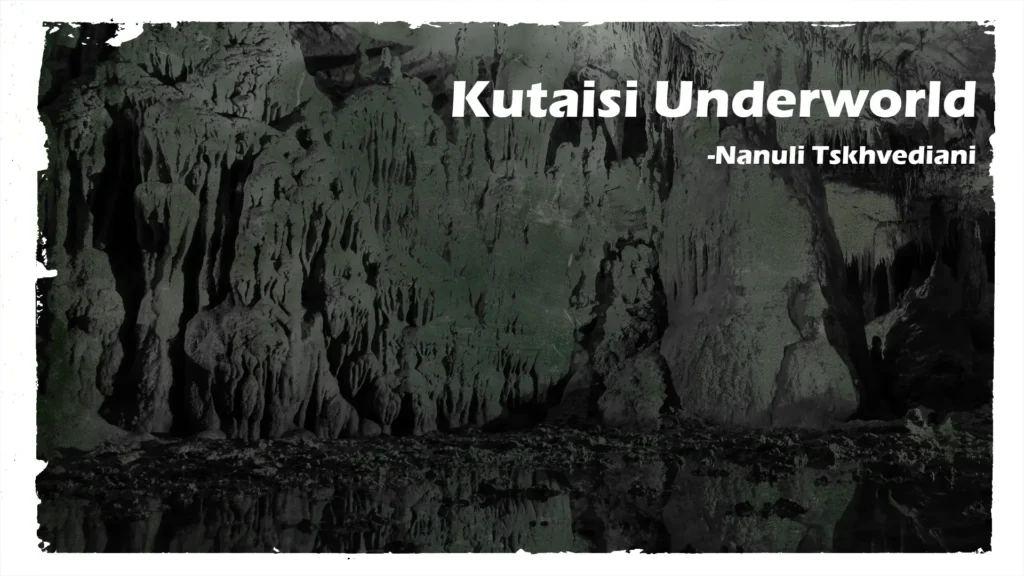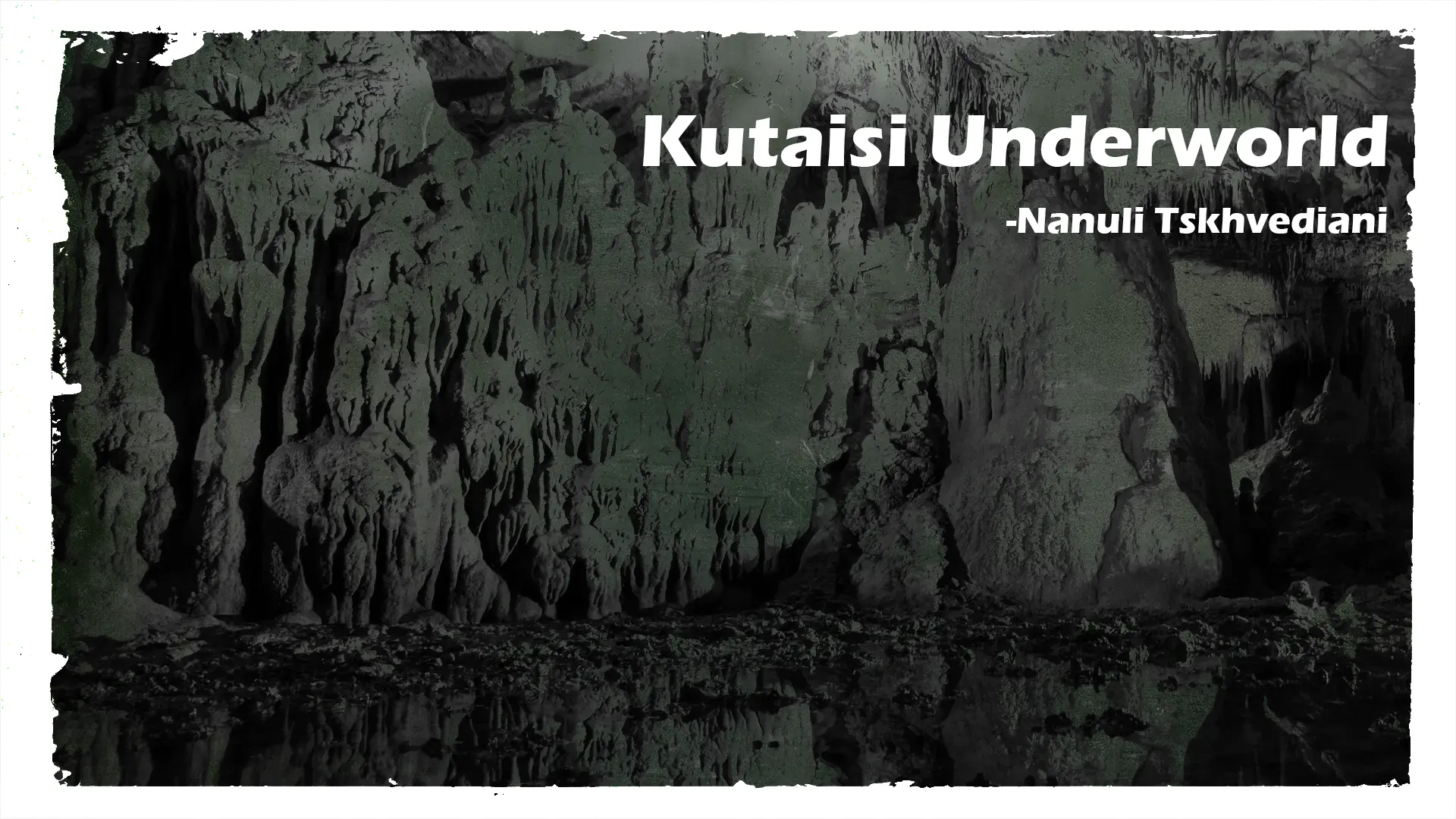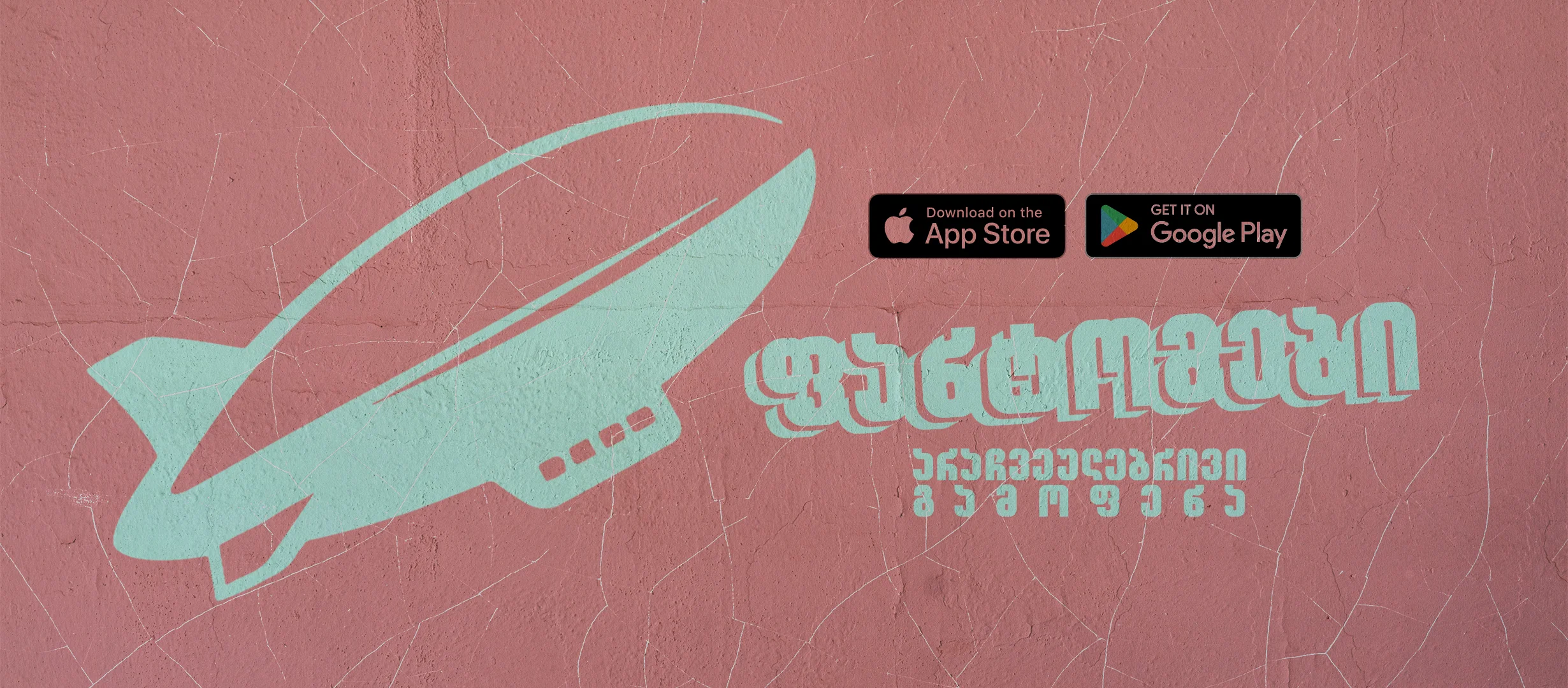
Author: Nanuli Tskhvediani
In ancient times, if a woman from Kutaisi directed a curse your way, saying: “May you fall into an abyss,” you were compelled to vividly imagine the earth cracking open beneath your feet and darkness swallowing you whole.
“Tskvarami,” batono, is a common Lower Imeretian expression that corresponds to a karst sinkhole and well. It’s interpreted as a synonym for the abyss, the netherworld, in Vukol Beridze’s “Bouquet of Words.”
Perhaps one day, a villager might be grazing his cow, relaxed and unguarded, when… suddenly, out of nowhere, his carefully nurtured heifer would vanish in the blink of an eye. Or, while returning from visiting relatives, exhilarated and drunk, an Imeretian might unbutton his traditional shirt ( called Akhalukhi) to let the night breeze cool his brow, then veer off the main road, seeking to shorten his journey by a peculiar path, and suddenly the ground beneath his feet would blur and give way…
Thus, through minor and major mishaps, people gradually learned and identified the locations of those fatal “tskvaramis” that they had to circumvent.
Many residents of Kutaisi might not even know that to the north of the city, amidst a bare expanse of limestone, one encounters “tskvaramis” at every step. According to Professor Levan Maruashvili, the vicinity of Kutaisi is home to approximately a thousand different karst sinkholes and wells! An amazing underground cave was discovered while constructing the Rioni Power Plant near Sapichkhia. It began with several funnel-shaped holes and then extended eastward for a significant distance. A vast array of different stalactites and stalagmites were found, and sightless, underground fish lived in the cave’s river. Currently, there is no access to this cave, and no one knows the current state of these fascinating representatives of ancient fauna – the “blind” fish.
The mystery of Kutaisi’s karst caves is a topic that could be discussed endlessly. For example, a natural karst cave lies between the Red and Chain bridges on the right bank of the Rioni.
According to ancient folklore, David and Konstantin Mkheidze sought refuge here in the 8th century. The warriors of Morwan the Deaf captured a servant of the heroes from Argveti while she was washing their Arab-blood-stained clothes in the stream emerging from the tunnel. The Arab guards forced the nun to reveal to whom the clothes belonged, thus tracing the Mkheidze brothers.
However, researchers were skeptical that this karst cave could be utilized for prolonged human dwelling. The investigation was undertaken by Petre Chabukiani, who, during his searches, discovered remnants of an old stone bridge on both banks of the Rioni River near the Red Bridge.
In early 1956, Petre Chabukiani found an entirely different karst tunnel in a private yard not far from this renowned tunnel! The tunnel’s entrance was obstructed with rubble. Clearing the entrance revealed it could serve as a shelter: the walls appeared to be artificially fashioned, suggesting it was initially a narrow karst tunnel later expanded.
Exploring both tunnels would be intriguing, undoubtedly presenting significant challenges – the tunnels form a complex karst phenomenon.
Thus, on December 27, 1956, notable figures from the older generation of Georgian climbers, Alyosha (Ate) Nemsitsveridze, Givi Kalabegishvili, and mountaineer-photojournalist Bondo Maglaperidze, equipped with special gear, descended into the first cave with Petre Chabukiani’s assistance. They immediately encountered an underground hole, traversed 80-90 meters through water running through the tunnel, forming small lakes, and observed stalactites and stalagmites – modest in size, for, as Alyosha Nemsitsveridze explained, their growth is retarded by air circulation in the tunnel and variations in water quantity.
In one of the tunnel’s chambers, their attention was drawn to a vertically ascending tunnel resembling a chimney. The climbers could not pursue it to the top, hindered by the walls’ dampness. Even the intense light from then-available electrical equipment could not reach the apex of this “chimney,” so lofty it was.
Entering the second unexplored cave turned out to be even more interesting. Alyosha Nemsitsveridze recalled:
“It has a narrow entrance 14-15 meters long, which ends in a relatively wide, high, and dry hall. The tunnel has traces of artificial expansion. We thought this hall was the end of the tunnel, but the sound of water attracted our attention, and a stream of cold air hit us. In the light of the lantern, we discovered in the right corner of the hall a narrow hole into which a person could enter. Soon, we found ourselves in this room with a large hole below where water flowed. We followed the current. In some places, the tunnel narrowed, but in others, it was quite large. We also discovered several halls. The tunnel is branched into a labyrinth, in the walls and branches of which natural carvings of amazing shape are visible – stalactite, stalagmite, and travertine layers. We followed the water flow for 200 meters. At the end, the tunnel was divided into small tunnels, and we came out to a waterfall. We were convinced that this tunnel is a continuation of the tunnel that starts from the bank of the Rioni River… It turned out that the water flowing in the tunnel originates from the funnel in “Tetramitsa,” located west of Mount Archieli. Therefore, we were interested in finding out through this tunnel if you can reach the funnel. We turned around and went upstream. We passed through several narrow passages and huge halls and finally came to a large lake, the surface of which touched the tunnel’s ceiling. The only way out was to dive into the lake, but providing lighting in the water was impossible. Therefore, the progression then stalled. The tunnel can be fully explored. All that is needed is the correct equipment and a reduction in the water flow level. The length of the tunnel is approximately 2 kilometers. Along the way, it is expected to encounter many lakes and waterfalls, as the tunnel begins at an altitude of 180 meters above the river level.” Alyosha Nemsitsveridze believed that karst phenomena had never been encountered in any city before; for the first time, this happened only in Kutaisi! The famous climber, speleologist, and teacher believed that it was necessary to study this object in detail and then improve it: “so that everyone could see it. The Kutaisi karst tunnel should turn into an interesting object.”
(Gaz. “Lelo,” No. 82, 1957).
“What is so interesting about eternally dark caves? What makes a person splash in the mud and icy water of narrow and long pits, injure their elbows and knees on cold, unpleasant stones, swim across underground rivers and lakes, plunge into deep abysses?” – asks the famous geographer Zurab Tintilozov, and immediately answers:
– Only and only for scientific interest.
For this purpose, in July 1959, a group of Georgian researchers entered the Karst Cave of the Chain Bridge.
Zurab Tintilozov interestingly told the readers of the newspaper “Stalineli” about this trip in the form of a report (July 15, 1959).
He said:
“On the right bank of the Rioni River, not far from the Chain Bridge, there is a karst cave from which an underground river flows. What makes this interesting? From the entrance to the cave, pits full of water appear, and the river spills over the entire width of the bottom and, in some places, even reaches the ceiling. To move forward, you need to slide along cracks filled with water. The water temperature is 13 degrees; the air temperature is slightly higher. Of course, it is inconvenient to take a cold bath and dive into water in unusual conditions – in the dark…” The researcher describes how the expedition members, Arsen Okrodzhanashvili, Zurab Tintilozov, Boris Gergedava, and Jumber Jishkariani, overcame obstacles. 90 meters from the entrance, water completely fills the cavity, touches the ceiling, and creates the so-called siphon. The cave naturally continues beyond the siphon. And when you don’t have scuba gear, getting over the siphon is a very risky endeavor, especially when you don’t know the length of the siphon.
But they did it at incredible risk!
On their return journey, near the siphon they had passed, they entered a branch, crossed the river via a wide and low corridor, and soon found themselves in a spacious hall, the height of which reached 15 meters. Having climbed the 8-meter steps of the hall, they arrived at the second floor, consisting of narrow holes, small lakes, and narrow halls.
“The acoustics in the hall are excellent,” writes Zurab Tintilozov, “daylight reaches us about 70 meters from the branch… The exit opens onto the same gentle slope of the Rioni River and is several meters above the entrance.”
Indeed, the first generation of explorers accomplished a remarkable feat. Yet, with the advancements of today’s technology, we stand on the precipice of even greater discoveries.
Dear Kutaisi residents, we are privileged to call this extraordinary city our home. Beneath our very feet, hidden beneath our houses, yards, garages, or gardens, lie secret treasures-underground lakes, waterfalls, and halls adorned with the breathtaking beauty of stalagmites and stalactites.
Let us also dream about a journey to this unique world.


